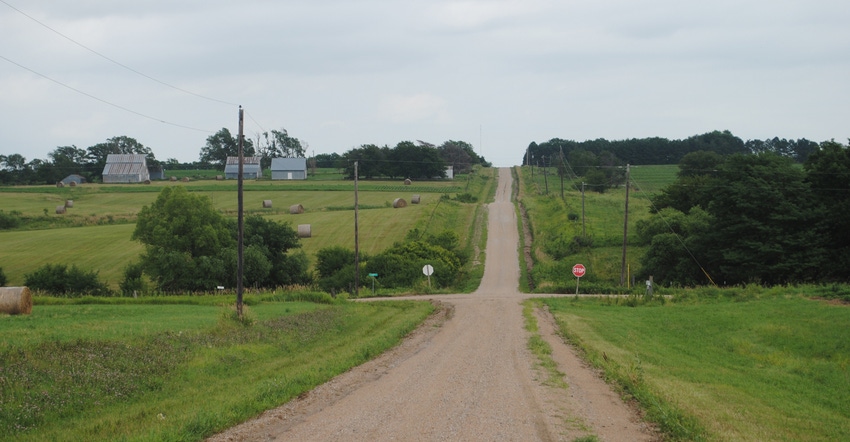
Nebraska’s agricultural land gained an average of 16% in value over the past year, increasing to a statewide average of $3,360 per acre. That’s what the University of Nebraska-Lincoln’s 2022 Farm Real Estate Market Survey found in preliminary results that were released in March.
At this record-breaking pace, Farm Progress asked Jim Jansen, Nebraska Extension agricultural systems economist and educator, to reflect on what these findings mean and what factors are driving the real estate market right now.
“The run-up in commodity prices was reported as a major driving force guiding land values higher,” Jansen says. “Questions remain on the impact that international conflicts may have on commodity prices and inputs used in crop production. How long current events persist and what impact they have in the long-run profitability remain unknown. Other forces such as extended drought across the state could also have an effect on prices and trends we are seeing in the real estate markets.”
Drought impact
Looking back, extensive drought across major grain-producing regions of the U.S., like in 2012, led to some of the prior historic highs reported about a decade ago for land, Jansen says.
“Drought pushed commodity prices to record highs, and incomes on operations increased as well,” he notes. “A fair amount of uncertainty exists with the long-run forecast of commodity and livestock prices.”
Interest rates for debt of various kinds may also be headed higher, Jansen adds. “How these forces impact agricultural markets remains uncertain at this time, but their effects on land values across the state will likely transpire over the upcoming growing season,” he says.
Authored by Jansen and Jeffrey Stokes, a professor in the UNL Department of Agricultural Economics, the final real estate survey report will come out in June. Jansen says he was surprised by some of the survey results.
“The use of 1031 exchanges to sell or purchase additional properties across the state received much more attention this year compared to prior years,” Jansen says. “People are concerned about potential changes to capital gains taxes and the impact this may have on their current or future land holdings.”
Drilling down
Back in 1978, when the survey was first established, land values were about $500 per acre on average across the state. The last time values reached as high as they were reported this spring was in the year or two following the 2012 drought.
According to the surveys this year, the highest land value gains were realized in the East agricultural statistics district, where gains were 19% over last year. The lowest gains were 11%, found in the North district.
Not surprisingly, the largest value gains were found across the state on dryland crop ground, with irrigation potential at 19% higher and center pivot-irrigated cropland at 17% higher. On the other end of the spectrum, gains were much more modest on non-tillable grazing land, a 10% increase, and hay land at 12%.
The Nebraska Farm Real Estate Market Survey is an annual survey of land professionals, conducted by the UNL Center for Agricultural Profitability. Results from the survey are divided by land class and agricultural statistic district.
Land values and rental rates presented in the report are averages of survey participants’ responses by district. Actual land values and rental rates may vary depending on the quality of the parcel and local market for an area. Preliminary land values and rental rates are subject to change as additional surveys are returned, and final results are made available in June. Learn more at cap.unl.edu/realestate.
About the Author(s)
You May Also Like






